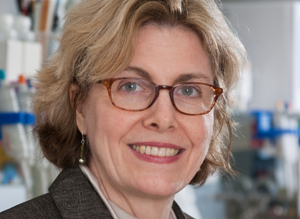Jennifer Larsen, M.D., associate vice chancellor for clinical research, recently discussed comparative effectiveness research (CER) with UNMC Today.
 |
Jennifer Larsen, M.D. |
In simpler terms, CER aims to find out what treatment or approach works best for which persons and under what circumstances.
Below we hear more from Dr. Larsen.
What should campus researchers know about comparative effectiveness research?
These new comparative effectiveness trials will compare established medications side-by-side for cost effectiveness as well as differences in outcomes. They also will compare different types of treatments such as medications with behavior interventions or surgical and medical treatments.
What kind of funding exists for comparative effectiveness research?
With the health care reform legislation, all insurers contribute to a “pool” of funds that will be administered by the new Patient-Centered Outcome Research Institute. The National Institutes of Health, the Agency for Health Research and Quality (AHRQ) and the U.S. Dept of Health and Human Services (DHHS) will all request proposals for comparative effectiveness research from investigators to compare the benefits and harm of alternative methods to prevent, diagnose, treat, and monitor a clinical condition or improve the delivery of care.
What’s an example of comparative effectiveness research being done on campus?
Dr. Iraklos Pipinos was involved in a pilot study at the Omaha VA Hospital that compared medical to surgical treatments for patients with blood vessel disease of the legs.
Dr. Cyrus Desouza has requested to submit a proposal for UNMC and the Omaha VA Hospital to combine to be a potential site for a study that compares five types of approved diabetes medications to determine which results in the best long term control of blood sugar for new onset type 2 diabetes.
Dr. James O’Dell has led several comparative effectiveness trials of combination therapies for rheumatoid arthritis using the Rheumatoid Arthritis Investigator Network — a collaboration of more than 40 rheumatologists from eight states.